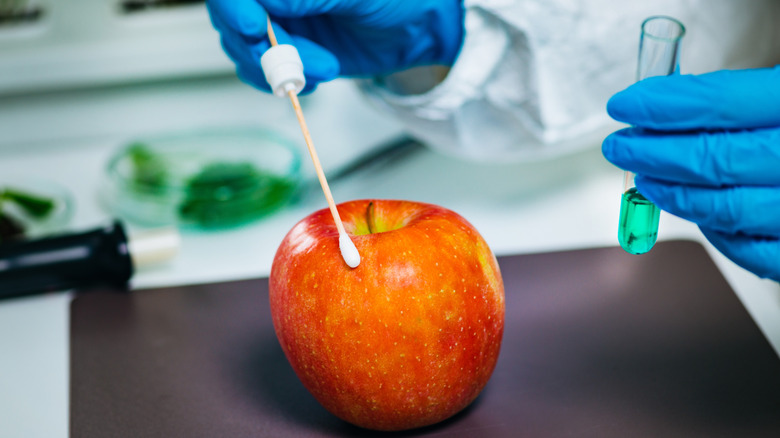Washing Your Fruit With Water Won't Always Remove Pesticides
You've likely heard, "Don't eat that fruit yet. It hasn't been washed," (or something similar) hundreds of times in your life. That's because fresh produce can be contaminated with dirt, insects, and pesticides. Rinsing your fruit with water does well to wash away loose debris and bugs, but scientists warn that it's not always enough to remove pesticides.
Insecticides of all kinds — including chlorpyrifos, a brain-damaging pesticide the EPA won't ban — are an essential component to ensuring that fruits and vegetables can grow to harvest. Since a variety of foods have soft exteriors, they may require more pesticide applications than harder-skinned produce that can withstand a few pests. So it shouldn't be a surprise that the Department of Agriculture's Pesticide Data Program found that the fruits that are most likely to have pesticide residues are strawberries, blueberries, and watermelons. Further, a study published in Nano Letters found that traditional cleaning methods don't wholly remove pesticide residue from fruits like apples.
The issue of pesticides on fruits and other produce isn't new, though. According to food scientists, they're difficult to get rid of because the waxy layers on certain foods hold onto them. You simply need something stronger than water to remove the chemical residues.
The best methods for washing pesticides off fruit and why they work
You might be surprised to learn that the best cleaners for removing pesticides from fruits are common kitchen staples. Just like you can clean a fossil with vinegar, you can use vinegar to remove these pesticide residues. The apple cider and white distilled varieties are ideal because they make the surface of the fruit acidic, breaking down the composition of the pesticides, particularly those that have a basic pH. For this method, mix 1 part vinegar and 3 parts water in a large bowl. Soak the fruit for five to 10 minutes, gently moving it around with your hands. When time is up, thoroughly rinse and dry the fruit for storage.
Along with baking soda getting rid of odors well, it's also effective at removing pesticides from the surface of fruit for the opposite reason that vinegar works: It has an alkaline pH. Because pesticide residues are unstable in alkaline environments, baking soda will break down the compounds so that you can wash them away. To use this method, combine 1 teaspoon of baking soda and 2 cups of water in a large bowl and let your fruit soak for five to 10 minutes while gently moving it around a little. Just keep in mind that leaving the fruit in this solution for too long can degrade the skin and change its flavor.
While these washing methods will remove certain pesticides from the surface of fruits, they won't make your produce completely pesticide free. That's because some pest control chemicals are designed to soak into foods, while others are applied directly to plant roots. Still, your fruit will still be safer to eat than it was before.

